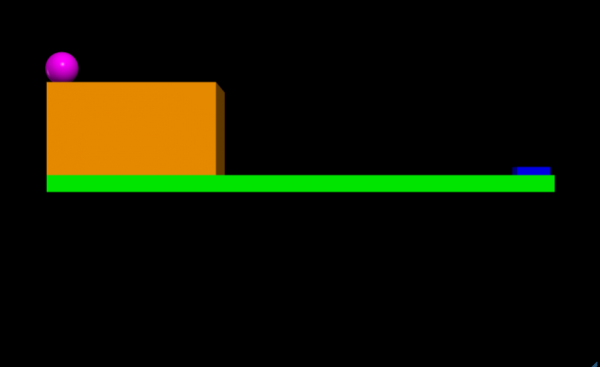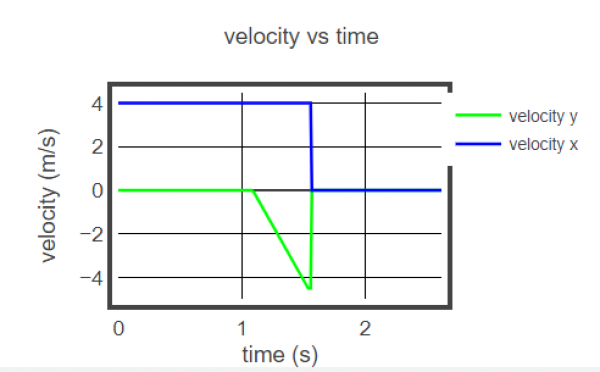Cirque du Soleil Stunt
Activity Information
Learning Goals
- Model a horizontal projectile and graph the object's motion independently with its horizontal and vertical components ( HS-PS2-1)
Prior Knowledge Required
- Kinematics
- Unbalanced forces
- ΣF≠0
- Momentum
- Energy
Code Manipulation
- Copying/pasting code
- Modifying existing code
- While loops and if statements
- Translating equations into code
—-
Activity
Handout
 Cirque du Soleil Stunt
Cirque du Soleil Stunt
As part of your Cirque du Soleil audition you are going to ride a bicycle horizontally off a cliff and fall into an airbag that is in the back of a moving pickup truck driving towards the cliff. The people in charge of personnel safety at Cirque du Soleil are concerned about the level of danger in your proposed stunt. In order to reassure them that you have a reasonable chance of being successful with the stunt, you are going to create a computer simulation. Using the minimally working code and the ball velocity provided by the stunt coordinator, determine an appropriate airbag speed and complete the simulation that shows you will hit the moving airbag. Be sure to include velocity versus time graphs of both your horizontal and vertical velocities.
Note: when conducting this activity with students, the initial velocity of the bike (ball) and the initial position of the airbag (target) can be provided by the instructor, but for demonstration purposes they have been included in the code below.
Code
Answer Key
Handout

To find the appropriate velocity of the airbag, we must divide this problem into several parts. Since horizontal and vertical motion are independent, we can first find the total time it will take for the bike to fall to the ground. Looking at the code, we see that for the provided target size and table height, the total distance the bike will fall is 1.25 meters. Knowing that the acceleration due to gravity is approximately -10 meters per second per second, we can use the following kinematic equation to solve for time: y=y0+vyt+12ayt2. Plugging in our knowns, we find 0=1.25−10t2. Rearranging and solving for t, we calculate that the total time it takes for the bike to hit the target once it falls off the cliff is 0.5 seconds.
Next we need to find out how far the bike travels horizontally as it falls off the cliff. Multiplying the initial bike velocity (4 m/s) by the time it takes to fall (0.5 s) tells us the bike will travel 2 meters in the positive x-direction as it falls.
Then, we need to find the time it takes for the bike to ride off the cliff. Again looking at the code, we see that the bike starts 2 meters away from the cliff. Dividing this distance by the initial horizontal speed of the bike, we find it will take the bike 0.5 seconds to travel over the edge.
Subsequently, we will calculate how far the airbag will have to move so that it will reach the bike when it lands. Taking note of the initial position of the airbag and the final position of the bike, we find the total distance the airbag has to move is 2 meters.
Finally, we can calculate the airbag speed. By dividing the distance the airbag has to travel by the total time it takes for the bike to fall—0.5 seconds to reach the edge of the cliff plus another 0.5 seconds to reach the ground—we compute that velocity of the airbag must be -2 meters per second (2 m/s in the negative x-direction).
Code